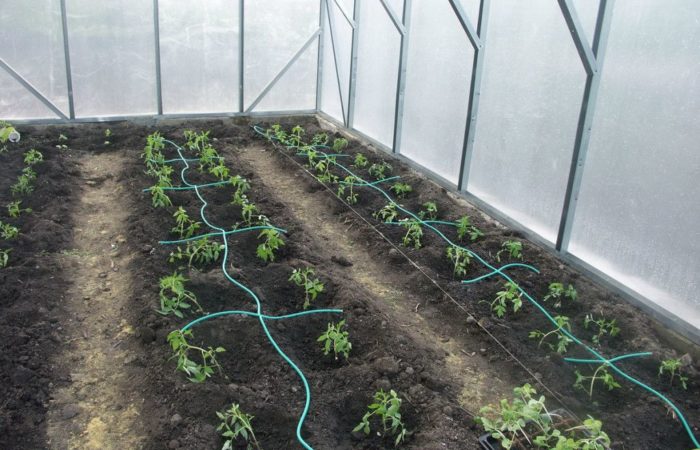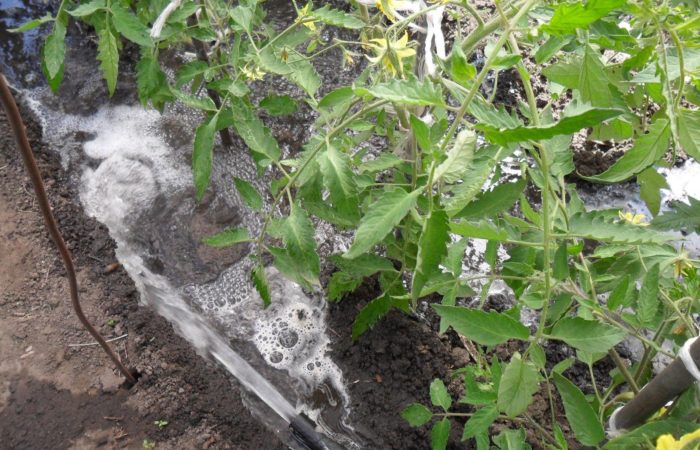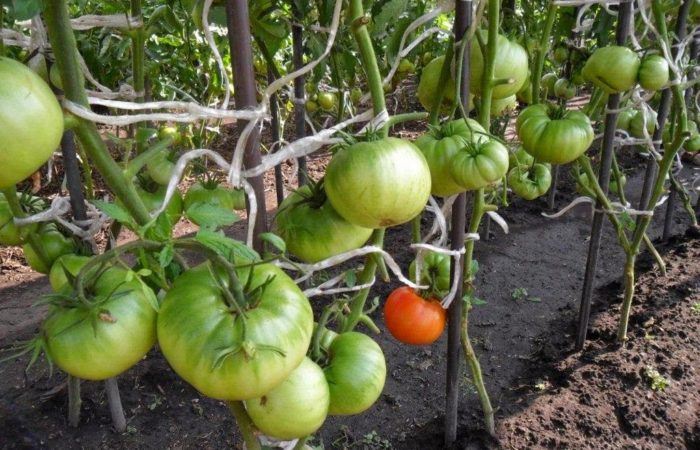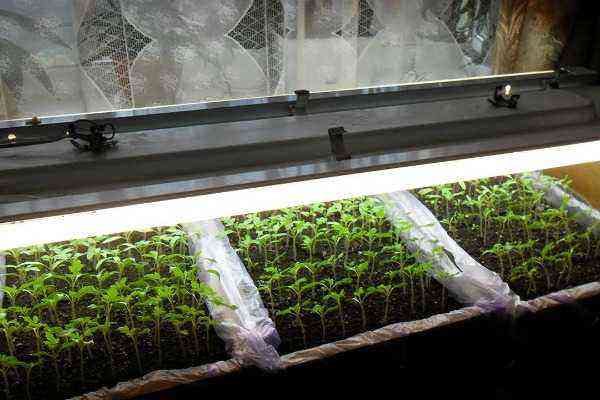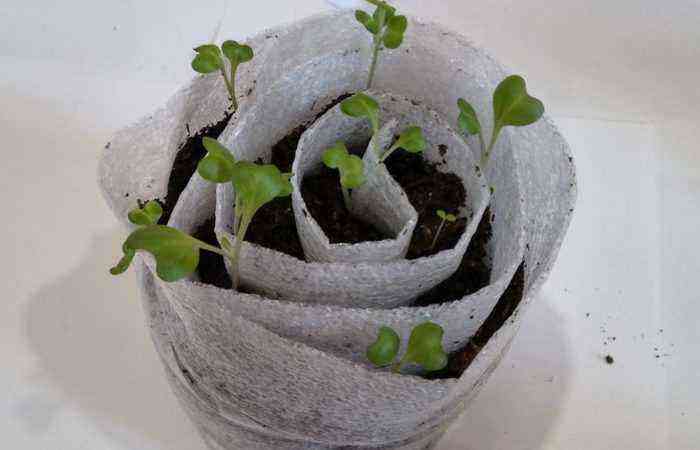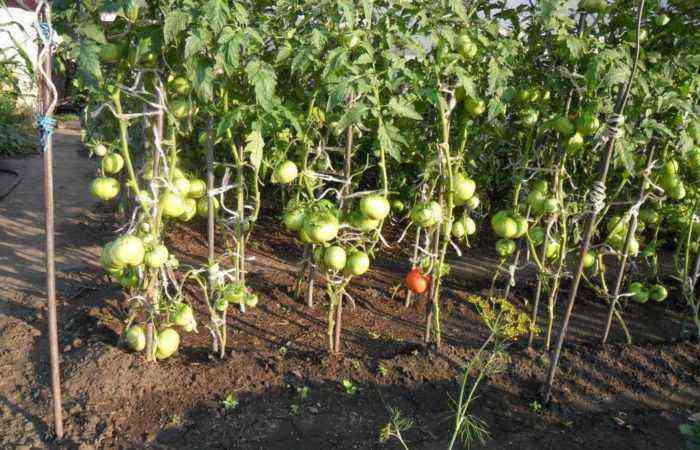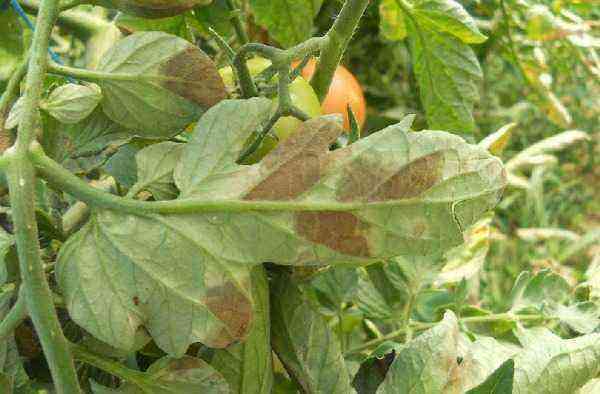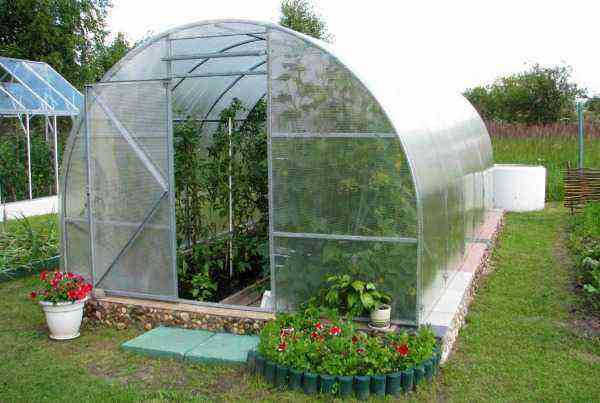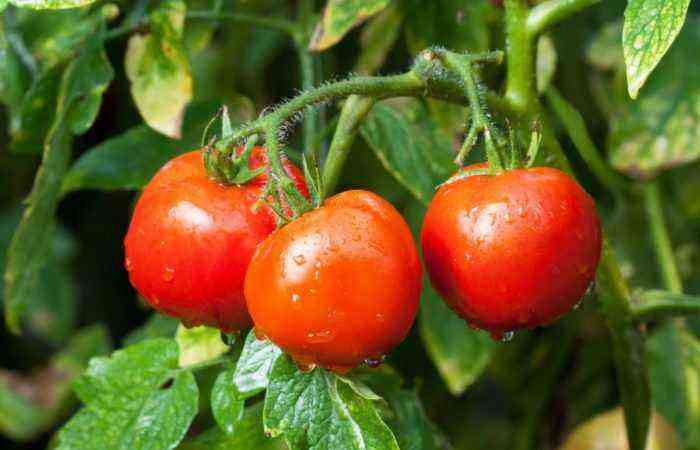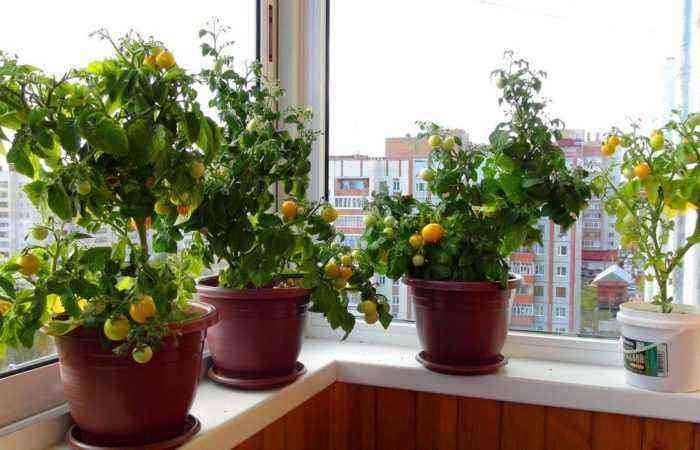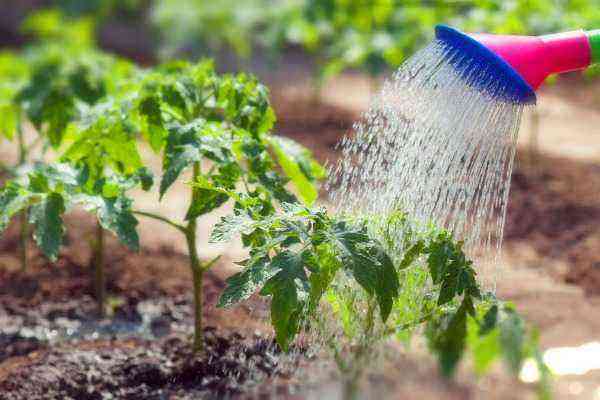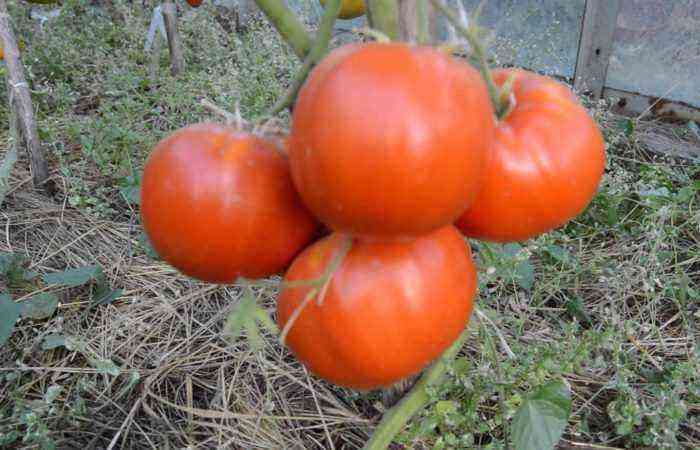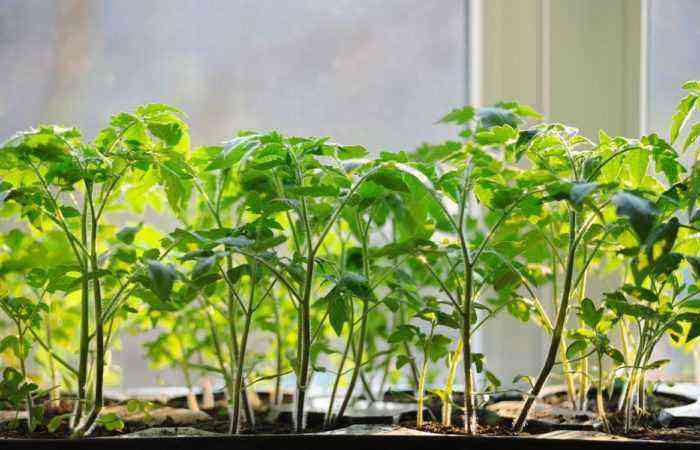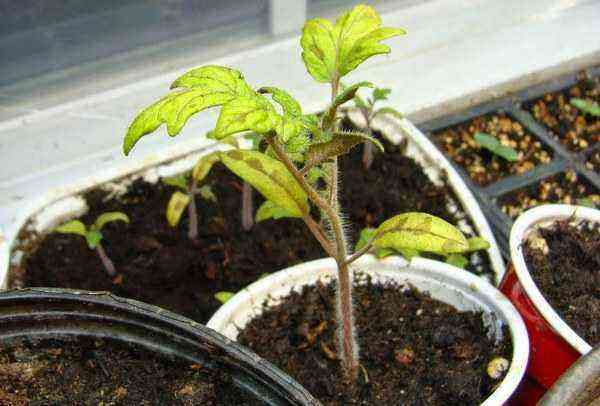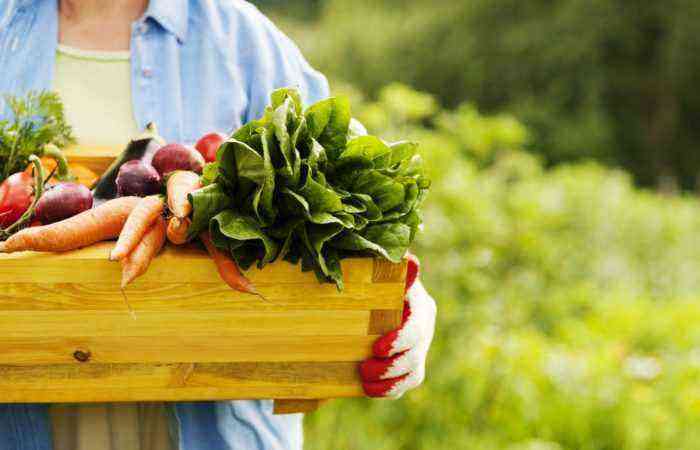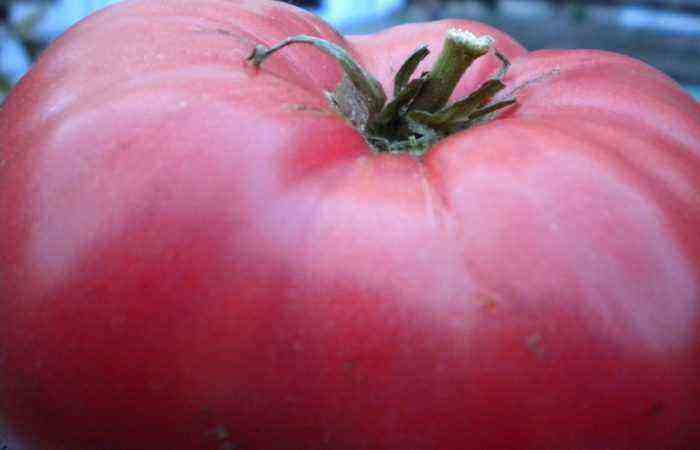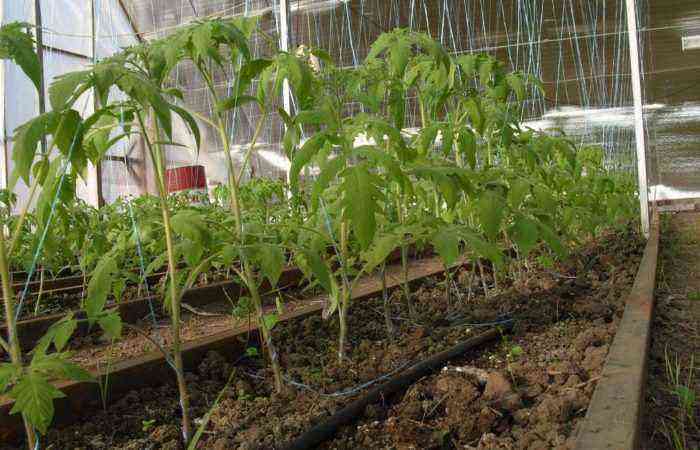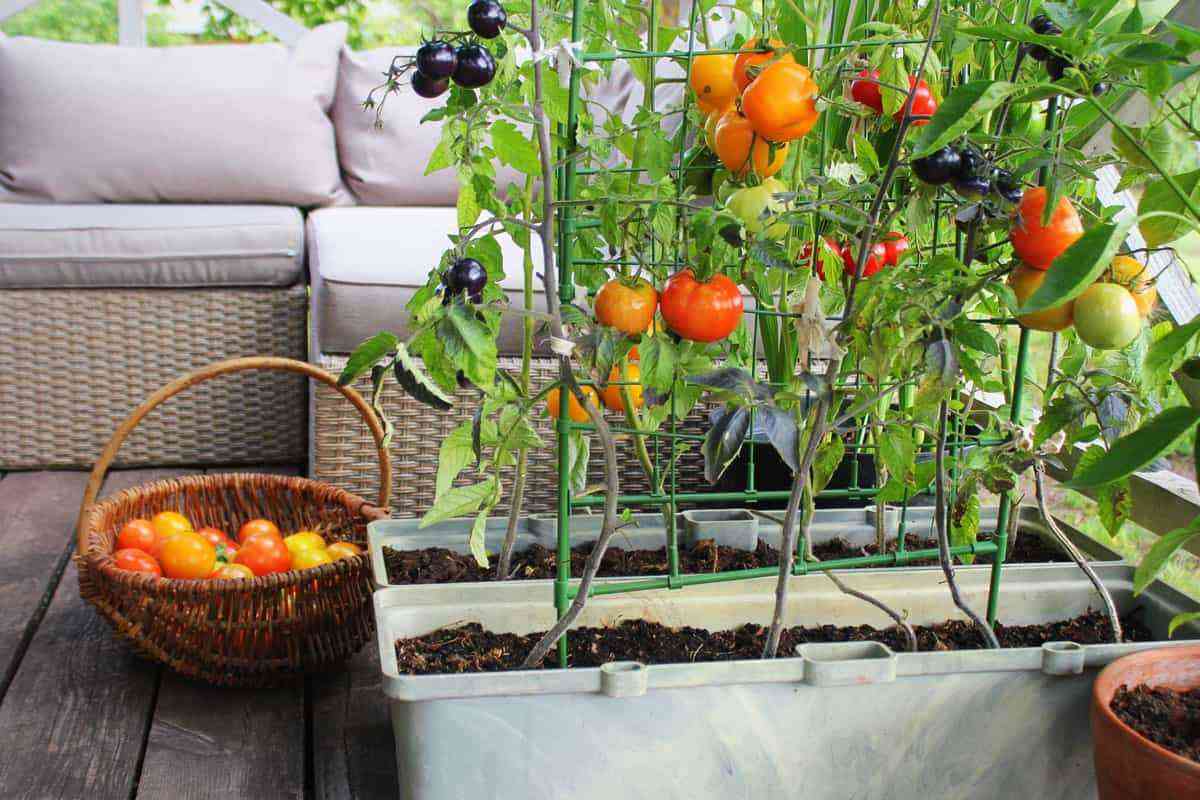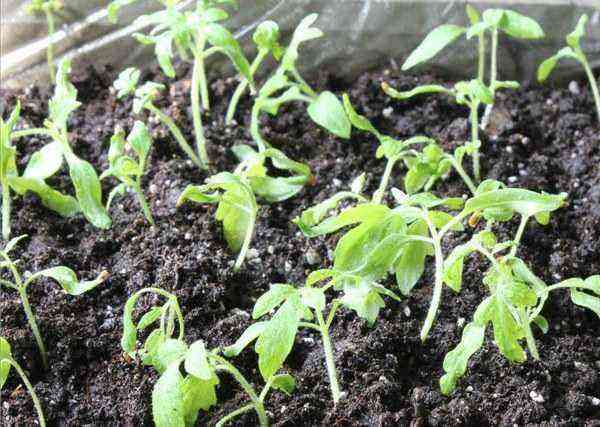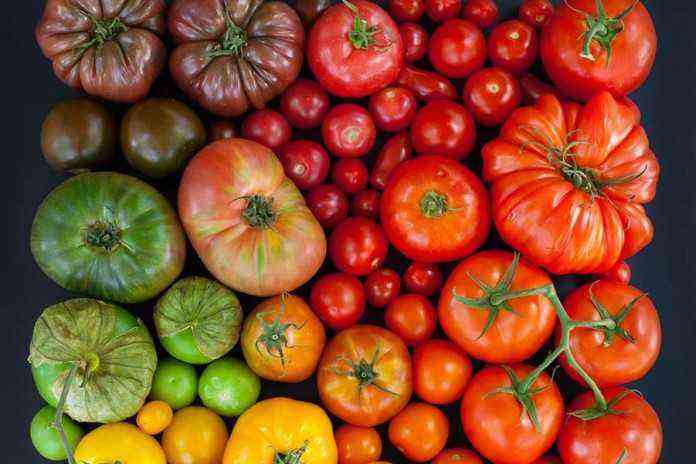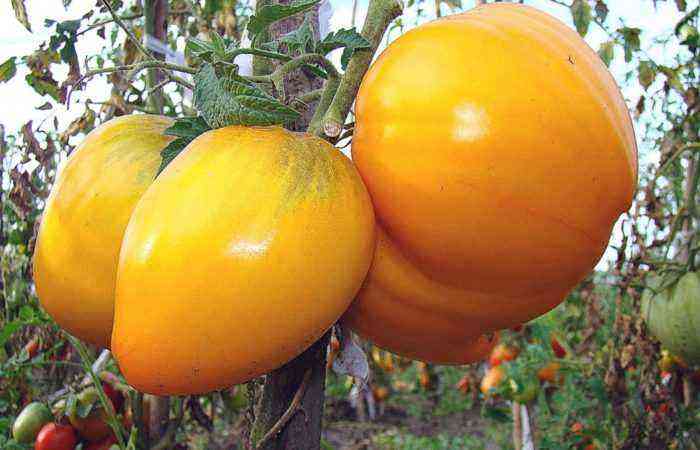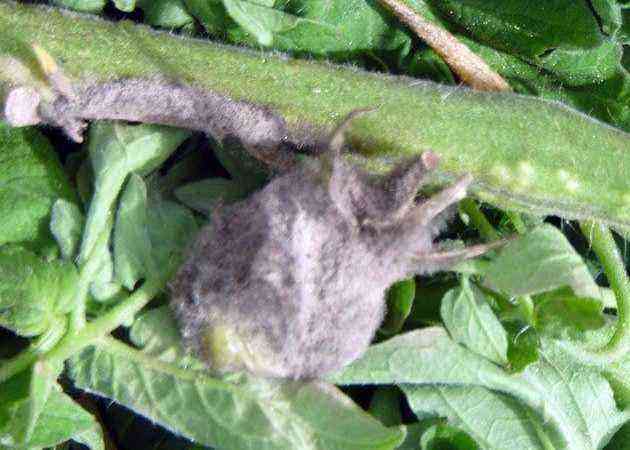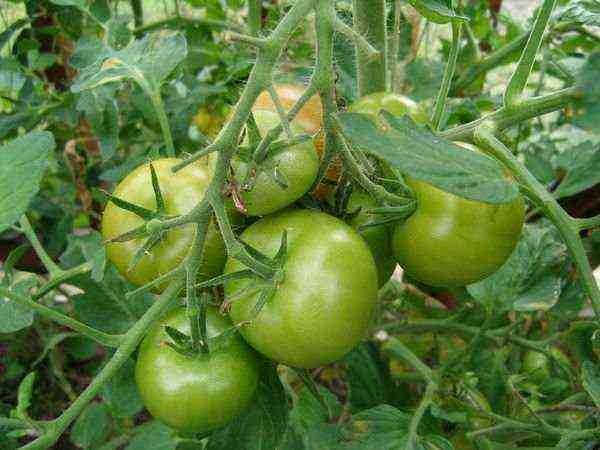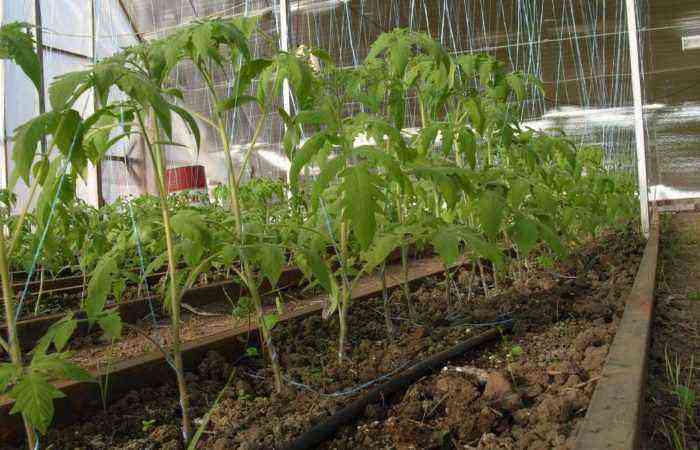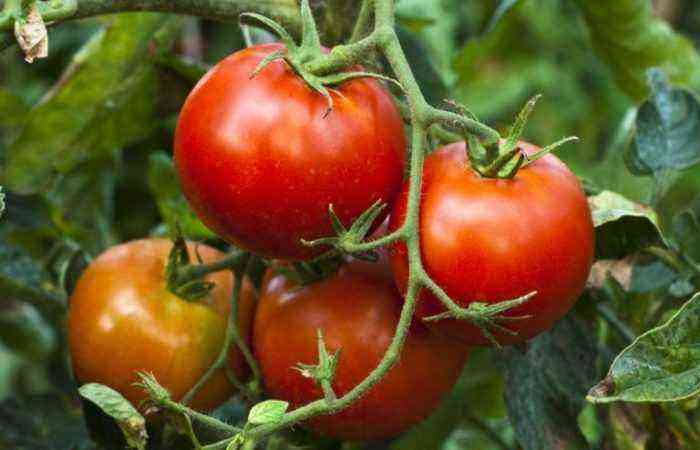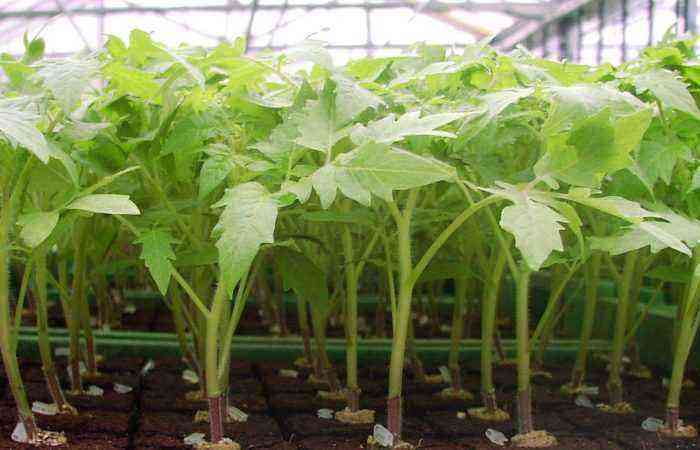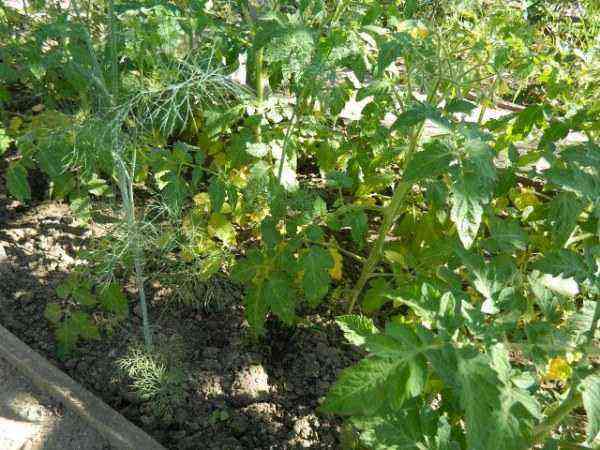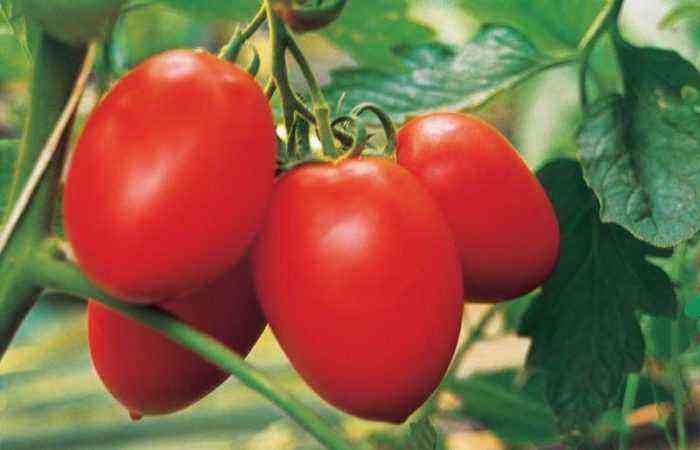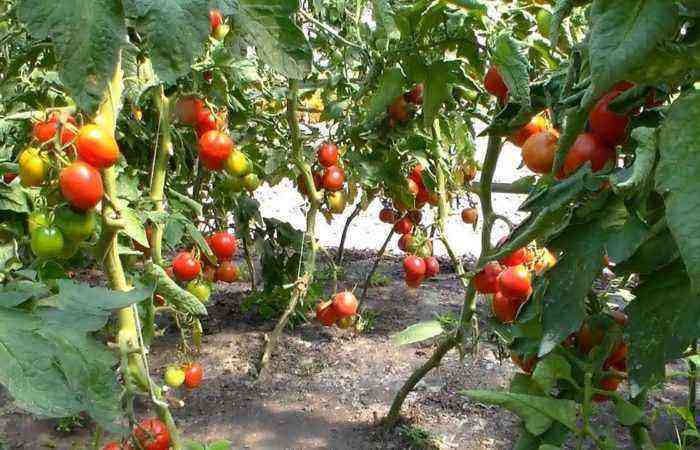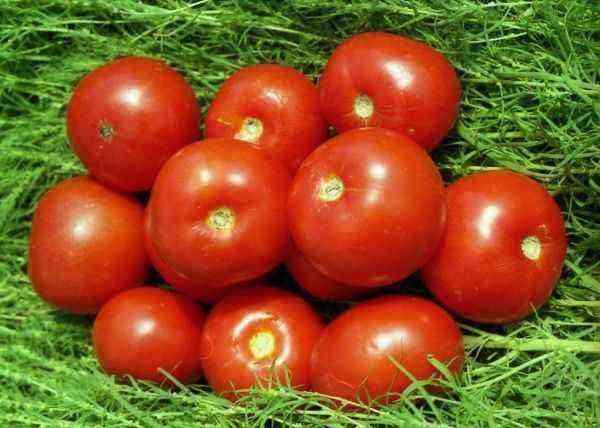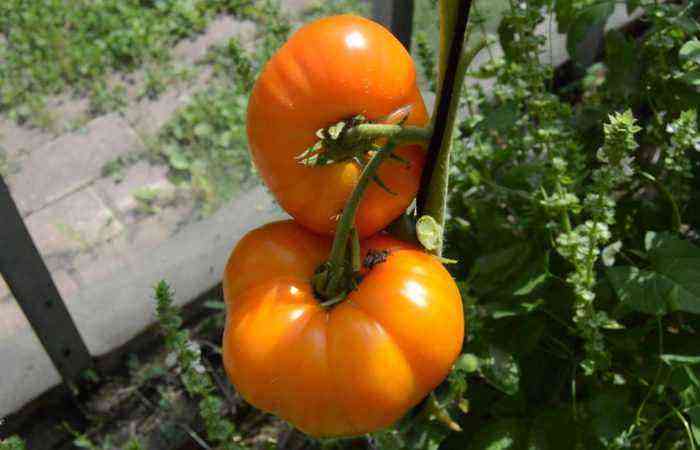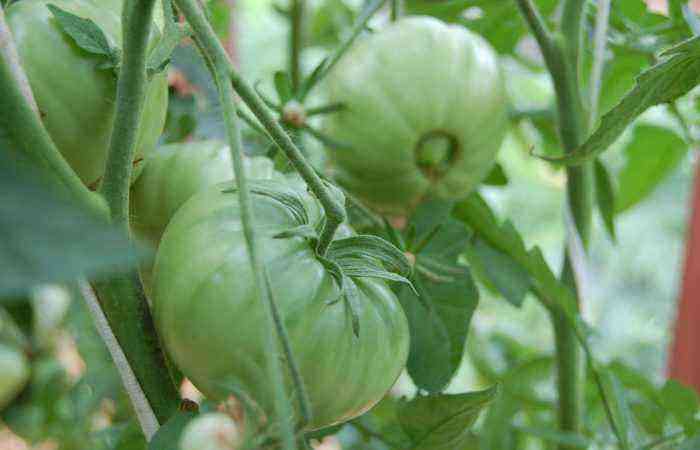Experienced gardeners know that tomatoes are an unpretentious vegetable crop that can do without watering. Without artificial irrigation, the wild ancestors of modern tomatoes grow and bear fruit, but their fruits are small and few.
Growth, fruiting and the size of the crop depend on the quality of nutrition, since nutrients in dissolved form enter each cell of the plant.
Watering open ground tomatoes – features
Irrigation rules common to all tomatoes are often difficult to implement on an open ground bed. A clear schedule is easy to follow for greenhouse tomatoes, while ground tomatoes directly depend on the weather.
- Tomatoes tolerate temperatures up to 3 ° C well only with sufficient soil moisture. Due to the active evaporation of moisture by the leaves, the bush itself copes with overheating.
- An excess of moisture leads to outbreaks of fungal diseases, the fruits crack, the bushes shed flowers, ovaries and fruits. Bottom line: the quality of the crop is lower than expected, the fruits are watery, tasteless.
Proper watering of the tomato garden at a certain time
Many years of experience in growing ground tomatoes has been studied and systematized. Recommendations for the care of open ground tomatoes did not arise from scratch, they have been tested by more than one generation of gardeners and practicing agronomists.
When is the best time to water? The unequivocal answer is just not in the heat. Watering open ground tomatoes begins no earlier than 3-4 hours before sunset. In extreme cases – in the morning, while it is still not very hot.
All recommendations come down to one rule – tomatoes need abundant watering no more than 1-2 times a week:
- 5 l under a bush of undersized tomatoes;
- 10 l – for tall varieties.
The frequency of watering ground tomatoes depends solely on the climate and soil characteristics. So, sandy soils do not retain moisture well, water goes into the sand in the literal sense.
Frequent watering in small portions does more harm than good, only the upper roots are fed, the lower ones die off, the bush suffers from malnutrition.
Experienced gardeners can tell if they need watering by feel. It is necessary to dig a bed with a shovel and squeeze the earth in your hand. If it is possible to blind in a lump, which will then crumble without effort, watering is not needed yet. Tomatoes themselves will tell you about the lack of water by wilting and darkening of the foliage.
In rainy weather, you don’t have to worry. Do not forget about the prevention of late blight and other fungi – prolonged drizzling rains create optimal conditions for their appearance.
Regular watering 1-2 times a week can be reduced to 1 time if the tomato bed is mulched, for example, with straw. Mulch perfectly regulates the moisture of the beds and is the best prevention of late blight. When the ovary fills up and gains the size of the fruit according to the variety, you can limit the watering of the tomatoes, and if there is mulch, stop altogether.
During ripening, it is important not to overdo it with watering – the skin of the fruit cracks and tomatoes after that are suitable only for urgent processing. At the other extreme, a lack of moisture can cause the plant to shed all flowers and ovaries.
What kind of water do tomatoes like
It is best to use rainwater – it is softer than tap water, does not contain chlorine impurities. It is desirable to use tap water settled, because:
- decompose and precipitate chlorine reagents;
- excess content of calcium and phosphorus salts pass into an insoluble form;
- the water is warming up.
It is undesirable to use cold water so that the plant does not experience shock from the temperature contrast.
After work, the topsoil must be loosened. The use of mulch on a tomato bed makes this operation unnecessary.
Types of irrigation – advantages and disadvantages
Depending on the area and layout of the tomato beds, the availability of free time and connection to the centralized water supply, various methods of irrigating tomato beds are practiced.
Manual from a watering can
A small bed is easy to water manually from a watering can.
- For 1 bucket of water, it is advisable to add 1 tablespoon of ash to feed the tomatoes at the same time.
- Pour water strictly under the root, so as not to wet the leaves.
- After abundant watering, be sure to loosen the top layer of soil after absorbing water.
Advantages: you can adjust the composition (add fertilizer), use prepared or rain water;
Disadvantages: the complexity of the process, time costs.
Hose by hand
A flexible hose with various nozzles and a system of adapters, connected to the water supply, greatly simplifies the watering of the beds.
Advantages: work does not require significant physical effort to water even a large garden;
Disadvantages:
- watering with hard cold water,
- work requires special care so as not to wet the leaves of tomatoes;
- it is difficult to normalize the amount of water under the bush; the hose is constantly confused, it is difficult to move it around the site.
Filling beds with water
If you organize the planting of bushes in a special way, you can water by filling the beds. Tomatoes are planted in 2 rows with a wide aisle. Shallow ditches for water are made between rows and along the outer edges of a long bed. A hose is placed in these ditches and the recesses are filled with water flush with the edges.
Advantages:
- simplicity of the method;
- the ability to give any top dressing;
- You can water no more than 1 time per week.
Disadvantages:
- high water consumption;
- availability of central water supply;
- watering with cold water.
The simplest drip
Drip irrigation can be thought of as a type of hose irrigation. The simplest option can be made independently, so that when unfolded, the system supplies water to all plants. Through small holes, water should flow out drop by drop. Such a system can be made from old rubber tubes.
It is necessary to control the process once and note the time required for the beds. Usually, it is at least 3-4 hours.
Advantages:
- drops of water is heated;
- can be left overnight;
- there is no need for subsequent loosening;
- water does not fall on the leaves;
- saving water.
Disadvantages:
- plumbing is required.
- holes are constantly clogged;
- an irrigation system must be purchased or made independently;
- beds should be planned according to the irrigation system.
Automation
An automatic watering system can be a labor and time saving solution. In this case, it is possible to regulate the flow of water under each bush.
Advantages:
- to turn on the watering, you only need to open the tap.
Disadvantage:
- the cost of the system, which includes a special container, pipes;
- everything is connected to a conventional drip irrigation system.
How the ditch watering bushes with tomatoes takes place can be found by watching the video.
Stages of growth and flowering of tomato
Immediately after planting and until the moment when the bushes take root well and go into active growth, the tomatoes are watered every day or every other day, depending on the weather. After loosening the soil and watering under the root of 1 liter of water, the final loosening is carried out. This regime is observed for about 7-10 days.
Before flowering and the appearance of the ovary, 1 brush is carried out, depending on the weather, 1-2 times a week. Until the fruits fill up and reach the required size, tomato bushes need artificial irrigation. The main criterion to be guided by is the condition of the foliage. Drooping foliage is the first sign of the need for watering.
It is important not to overmoisten the soil, otherwise you can lose the entire crop from an outbreak of late blight and other diseases. With a lack of moisture, the bushes themselves regulate fruiting – they shed their color and ovaries, and the remaining fruits become smaller.
During the fruiting period, it is necessary to control the soil moisture especially carefully – to avoid drops. Watering after the soil has dried out will certainly lead to cracking of the fruit. The harvest will only be suitable for immediate processing into juice.
How to water different types of tomatoes
The specifics of watering tomatoes of undersized and tall varieties differ only in the amount of water, which is determined solely by the size of the bush. The determinate “Ephemer” 40-50 cm high and the giant indeterminate bush “De barao” consume different amounts of water. The standard scheme “undersized – 5 liters, tall – 10 liters” is very arbitrary.
The intensity is determined by soil moisture. It is necessary to maintain moderate humidity without overdrying.
The need for watering should be determined either by touch: by the flowability of the soil, or by the foliage: wilted or fresh.
Large-fruited indeterminate varieties require more frequent watering. With a lack of water, the fruits become smaller and crack after the first rain.
Tomato differences in terms of ripening do not have a special effect on the irrigation regime. The rule common to all varieties also works here – tomatoes produce a quality crop only with moderate but sufficient watering.
Recommendations to gardeners
Watering should be considered at the stage of planning the beds.
- It is necessary to take into account the location of the beds, so that it is convenient to carry water or lay a hose.
- If watering is planned by filling the beds, you need to plant seedlings in 2 rows with a wide row spacing.
- At the summer cottage, prepare barrels to collect rainwater.
- If there is a water supply system, think in advance and prepare a system for connecting and distributing water throughout the site.
- Prepare mulch (straw, wood chips, sawdust) for a more comfortable growth of tomatoes. The use of mulch reduces the risk of fungal diseases when the soil is waterlogged in a rainy summer.
- In regions with traditionally rainy summers, it is recommended to grow tomatoes in high beds. They are prepared in advance, preferably in the fall.
The yield of tomatoes and its quality directly depend on the uniformity of the irrigation regime. There should not be overdrying of the soil with subsequent waterlogging. Such extreme conditions cause a response – the plants throw off the color and ovaries. Only the observance of the rules guarantees a bountiful harvest.

